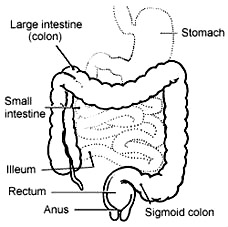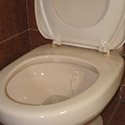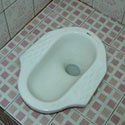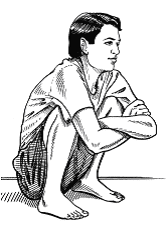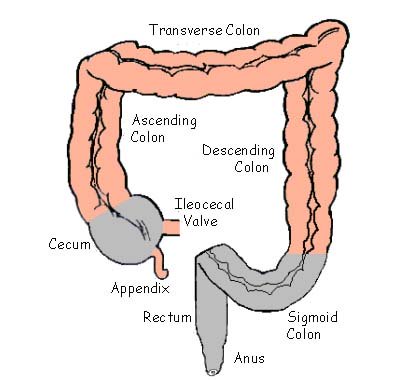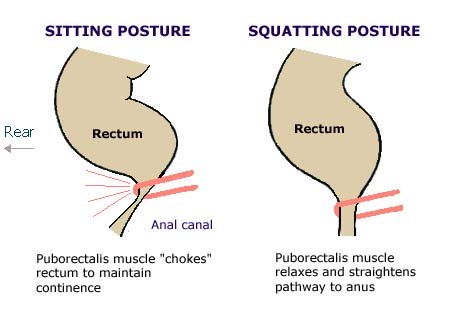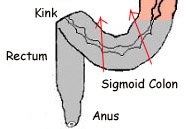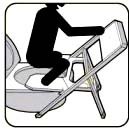|
Crohn's Disease: How You Can Prevent Or Treat It
Crohn's Disease is one of two inflammatory bowel diseases (IBD) that cause chronic inflammation of the intestines. The other one is ulcerative colitis. Both diseases have some features in common. But there are some important differences, in terms of the location and nature of inflammation.
Another difference is the pattern of inflammation. Crohn's Disease causes inflammation that spreads much deeper into the layers of the intestinal wall. Ulcerative colitis, on the other hand, usually affects only the innermost lining (top layer) of the colon. Crohn's Disease is painful and debilitating, and can lead to life-threatening complications. Those who have Crohn's Disease (and ulcerative colitis) suffer from symptoms such as diarrhea (up to 20 times a day), abdominal pain and cramps, blood in the stool, ulcers, reduced appetite and weight loss. The medical establishment does not know exactly what causes Crohn's Disease. Many theories have been cited, but none has been proven. And there is no known medical cure for Crohn's Disease. So the approach taken by doctors in treating Crohn's Disease is to control inflammation, relieve symptoms and help patients improve the quality of life. Surgery also does not cure Crohn's Disease as inflammation tends to return near to the area of intestine that has been removed.
There is an underlying cause for Crohn's Disease (and IBD in general) that many doctors do not know or have ignored. It is the Western habit of using sitting toilets. It can be very difficult for people living in the white, English-speaking Western world to accept this. For the majority of Westerners have never even seen, let alone use, a squatting toilet. But it is true.
The sitting toilet is the real reason why Crohn's Disease is prevalent in the Western world, but not in other places (where the people squat to empty their bowels).
There are significantly more reported cases of Crohn's Disease in Western Europe and North America than in other parts of the world. In America alone, more than 500,000 have Crohn's disease. In 1997, The Lancet published the results of a study about IBD:
But noted:
Unaware of the connection between toilet posture and colon hygiene, many Western researchers assumed, for many years, that a different diet was protecting the developing world from IBD. They did not realised that these cultures have no uniform diet. For example, the Masai people in Africa are almost exclusively carnivorous. Hindus in India are vegetarian. Other groups subsist on fish, or even on insects. On testing their hypothesis, doctors were forced to conclude that "no special diet has been proven effective for preventing or treating this disease" (University of Chicago Hospital's website). Another theory was that fecal contamination of food and water in the developing world somehow provide a "natural inoculation effect" against inflammatory bowel disease. This theory reflects a common misconception about the "superior hygiene" of the developed world. What researchers did not know was that the internal colon cleanliness of people living in the West, where sitting toilets are well entrenched, compares poorly with those in societies where traditional squatting toilets are used.
Colon hygiene and health depend on effectiveness of daily elimination. The truth is that human beings are designed to evacuate waste in the squatting position. By ignoring this fundamental requirement for waste elimination, the sitting toilet makes it impossible to clear the bowels completely. This leads to waste stagnation and contamination in the colon. In the affected areas, virulent bacteria can establish colonies and inflame the surrounding tissues. Depending on the location, strain of bacteria involved and the extent of the inflammation, the disease would be called by different names. SIDENOTE How Squatting Can Prevent Crohn's Disease In order for waste to be evacuated effectively, the colon (see diagram) needs to compressed and be properly prepared.
This can only happen in the squatting position. In the squatting position, the thighs -- pressed against the abdomen -- causes the pressure in the abdominal cavity to increase. The resulting compression of the colon makes it easy to expel waste. Moreover, the colon has built-in natural obstacles that can only be released in the squatting position. In the last stage of the colon, at the rectum, the puborectalis muscle needs to be relaxed so that waste could pass out freely through the anus. In the sitting position, the rectum is maintained in a "choked" position, making defecation difficult.
Another natural obstacle is the kink (bend) where the sigmoid colon joins the rectum. In the squatting position, the left thigh supports and lifts up the sigmoid colon to open up the kink to allow waste to flow easily to the rectum.
The cecum is the first part of the colon. It is shaped like a pouch to receive wastes from the small intestines. The flow of waste is controlled by ileocecal valve which acts as a one-way inlet valve. The ileocecal valve is designed to allow food wastes to flow from the small intestine into the cecum, but prevent the flow of waste back into the small intestines. Both the cecum and ileocecal valve are designed with squatting in mind. In the squatting position, the right thigh squeezes the cecum from below to push wastes upwards into the ascending colon, and away from the ileocecal valve. This keeps the cecum (and appendix) clean and the ileocecal valve securely closed to block and prevent waste from contaminating the small intestines (a form of Crohns Disease called ileitis). The net result of squatting is effective waste elimination and colon hygiene. This is the reason why Crohns Disease is absent in countries where people squat to empty their bowels.
Deprived of the support from the right thigh, the cecum cannot be squeezed empty of wastes. Without support from the right thigh, the ileocecal valve is also left unaided in its role of preventing the backflow of toxic wastes into the small intestines.
The bend where the sigmoid colon joins to the rectum is not released due to the lack of support from the left thigh. The rectum is gripped in the choked position by the puborectalis muscle. Invariably, a person using a sitting toilet has to strain and ‘push’ downwards while holding the breath (Valsalva Maneuver) in an attempt to force waste through these obstacles. Yet, it is never good enough; evacuation is difficult and uncomfortable. Despite all the straining, it is impossible to clear the colon completely. The forces from the straining and pushing not only stresses the internal organs and nerves, but could also overwhelm the ileocecal valve, allowing wastes to leak into the small intestines and trigger the onset of Crohn’s Disease.
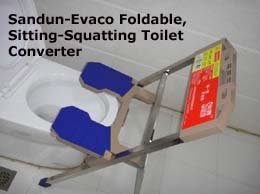
History revealed that inflammatory bowel diseases emerged in the West toward the end of the 19th century. Professor Joseph B Kirsner of the Department of Medicine, University of Chicago noted this trend in his article Historical Origins of Current IBD Concepts [World Journal of Gastroenterology, Apr 2001, 7(2):175-184]:
The period cited by Prof Kirsner coincided with the time when sitting toilets were introduced on a big scale, first in England and then in other Western countries. It is another piece of evidence that points to the link between sitting toilets and the growing epidemic of colon problems. While Crohn's Disease is a serious condition, there is no need to fear or feel helpless about it. Proper medical treatment and self-care would enable most patients to have a productive, normal life. But the most important thing one can do is to squat instead of sit for bowel movements. This change in toileting posture would put many patients on the road to full recovery.
For those who have been using sitting toilets, taking up the squatting position might be difficult, as explained in this page on squatting facets. With regular practice, however, a person can regain the ability to squat again. This would then enable allow him or her to switch to squatting for waste elimination using one of the options described on this
page.

Further Reading The Roadmap To Colon Health
Have A Great Story About This Topic?Do you have a personal account about the topic discussed on this page? Please consider sharing it. You can be sure that many people in the world would love to read about and greatly benefit from your experience. It's easy to do. Just let your words flow. Thanks for sharing! What Other Visitors Have SaidClick below to see contributions from other visitors to this page...
Its Really Not That Simple
Not exactly it - Crohn's
Very Little Colitis in India Not rated yet
Another theory Not rated yet
Hasn't worked for me (Crohn's). Not rated yet
Norma Bennett Not rated yet
This is the best thing to happen to me Not rated yet
Discovering the real cause
|
The Best Toilet Converter in The World Today!


Helping People All Over
The World Achieve
Good Health Through
Correct Toileting Posture
Watch video on the
origin and story of
the Sandun-Evaco
toilet converter
All about Life,
Hope and Truth...
FREE:
One of the most
astounding books
you will ever read
in your life!




